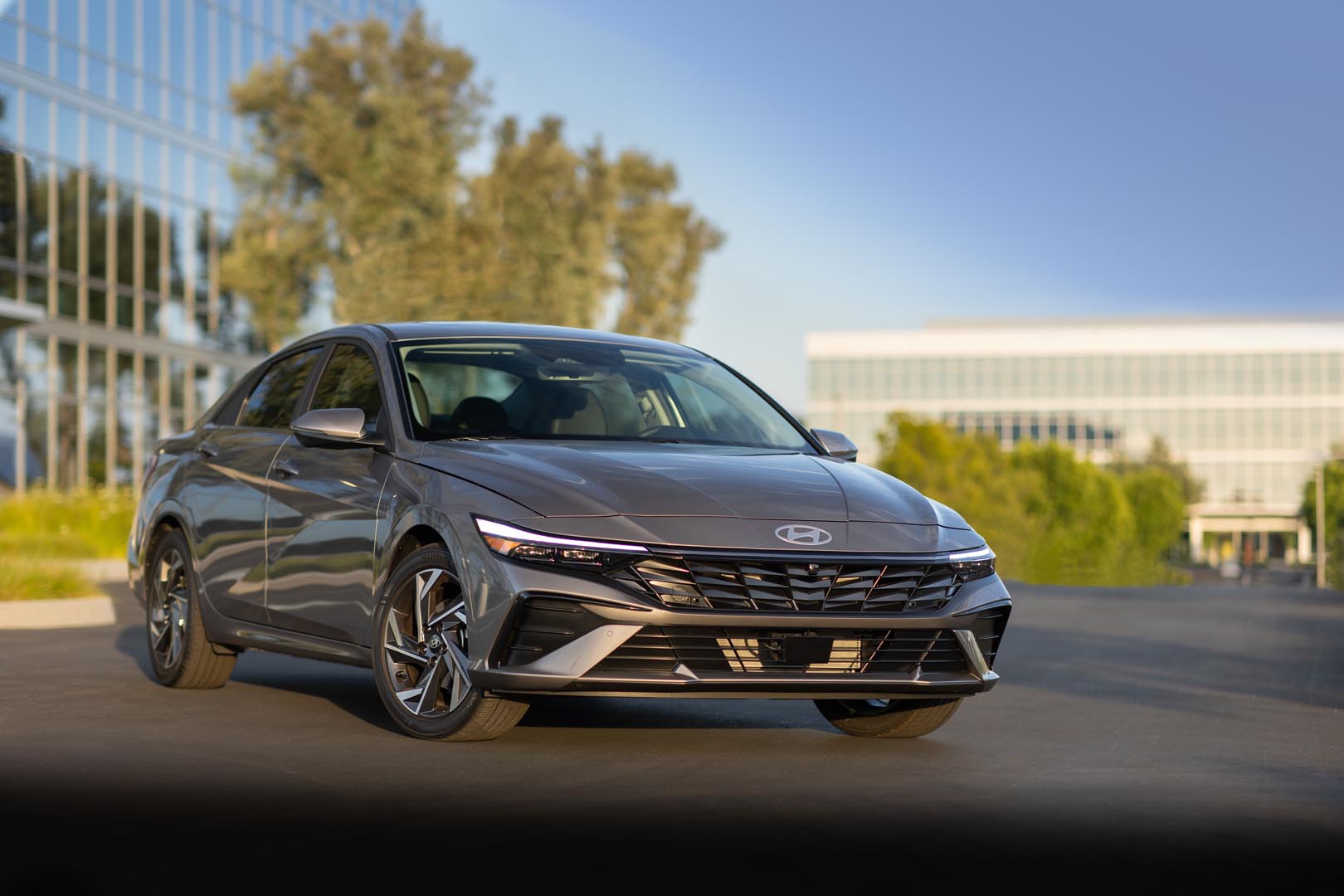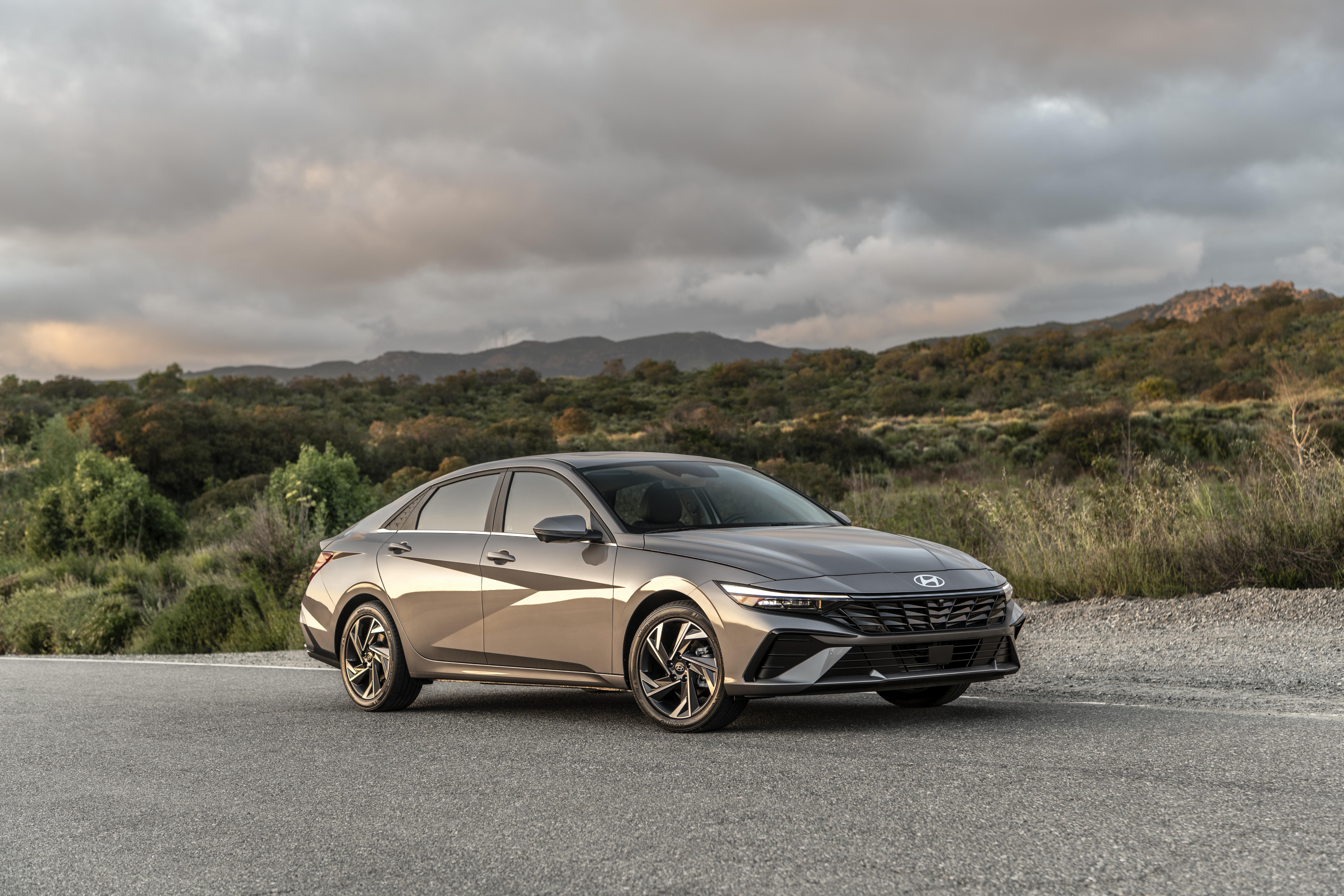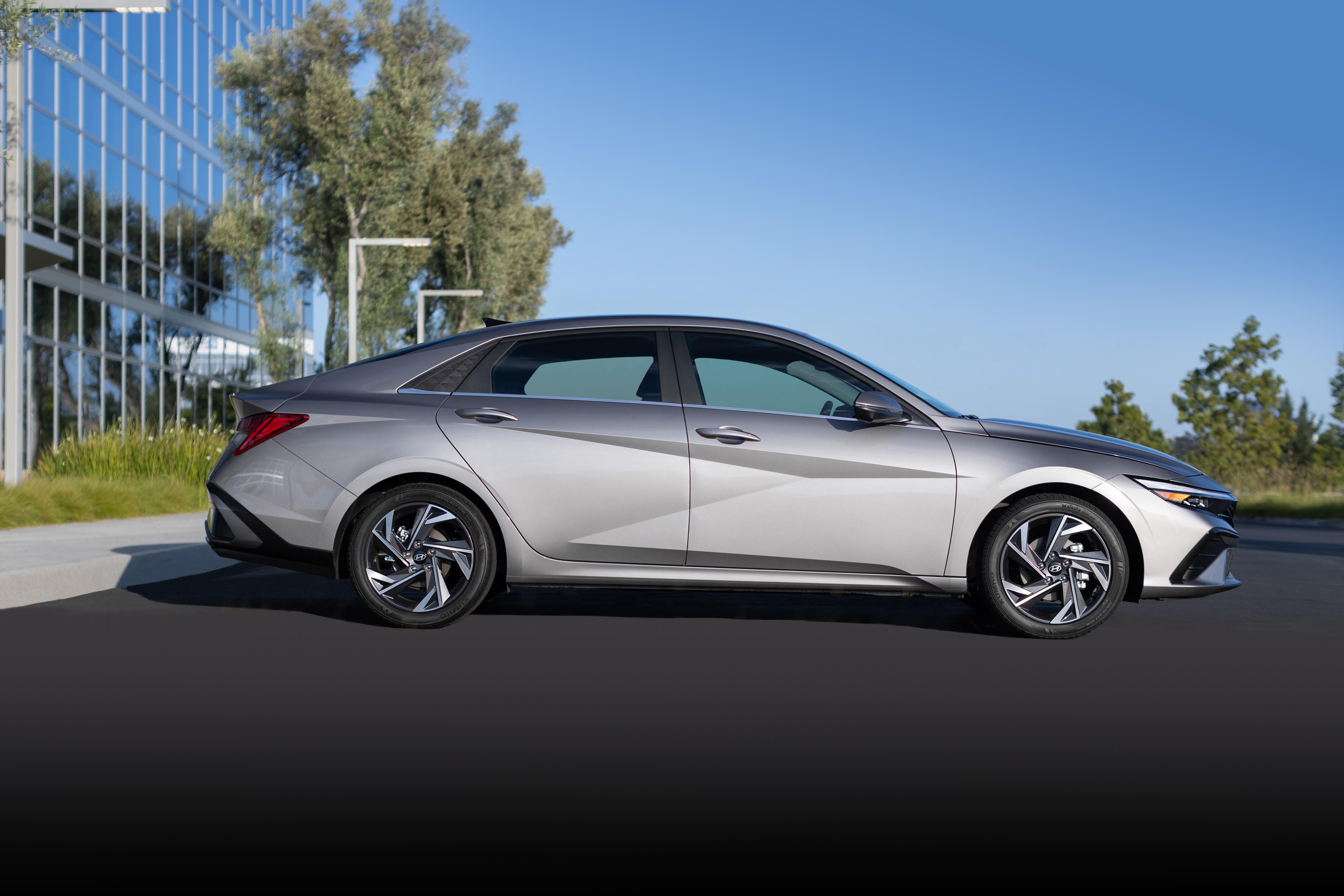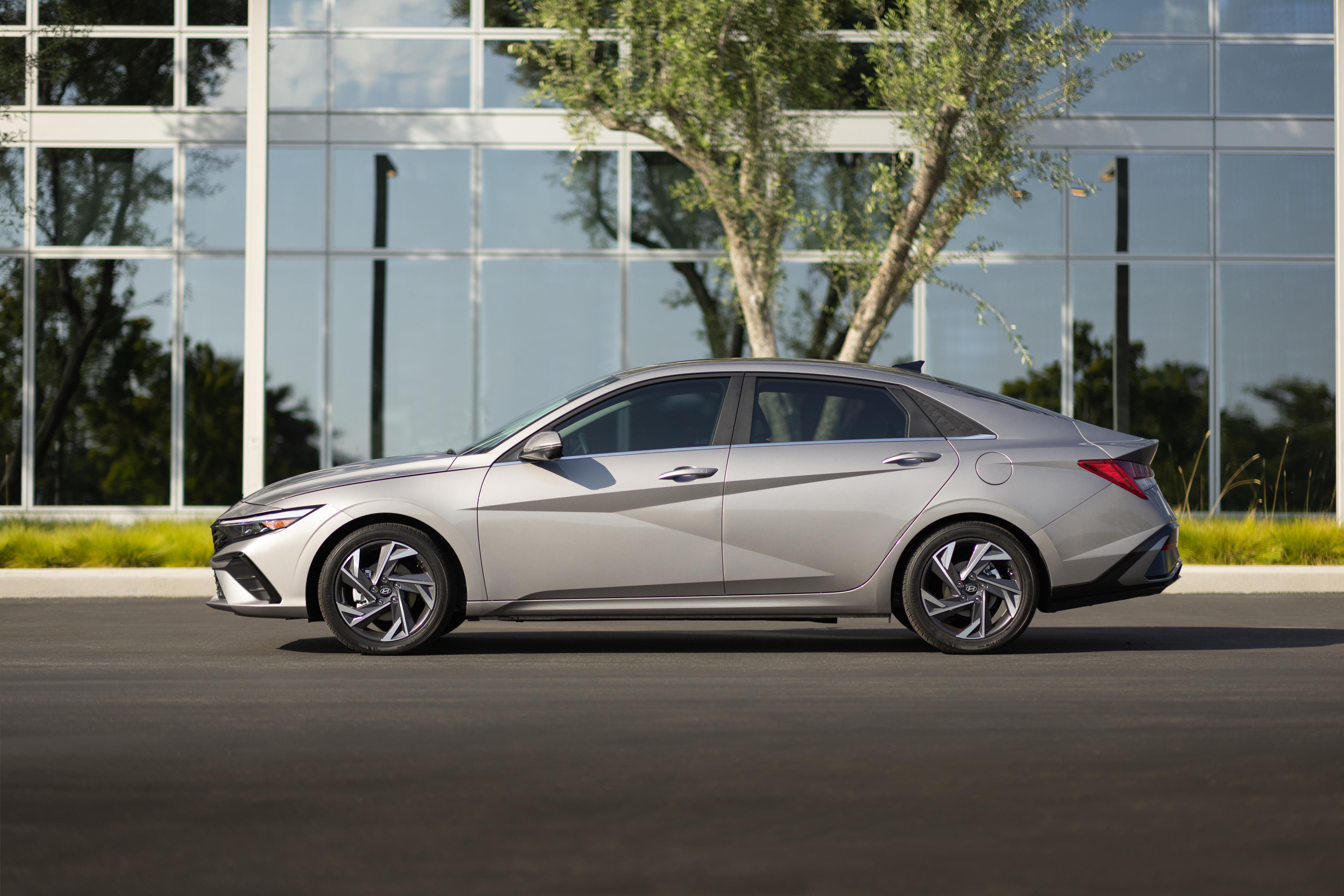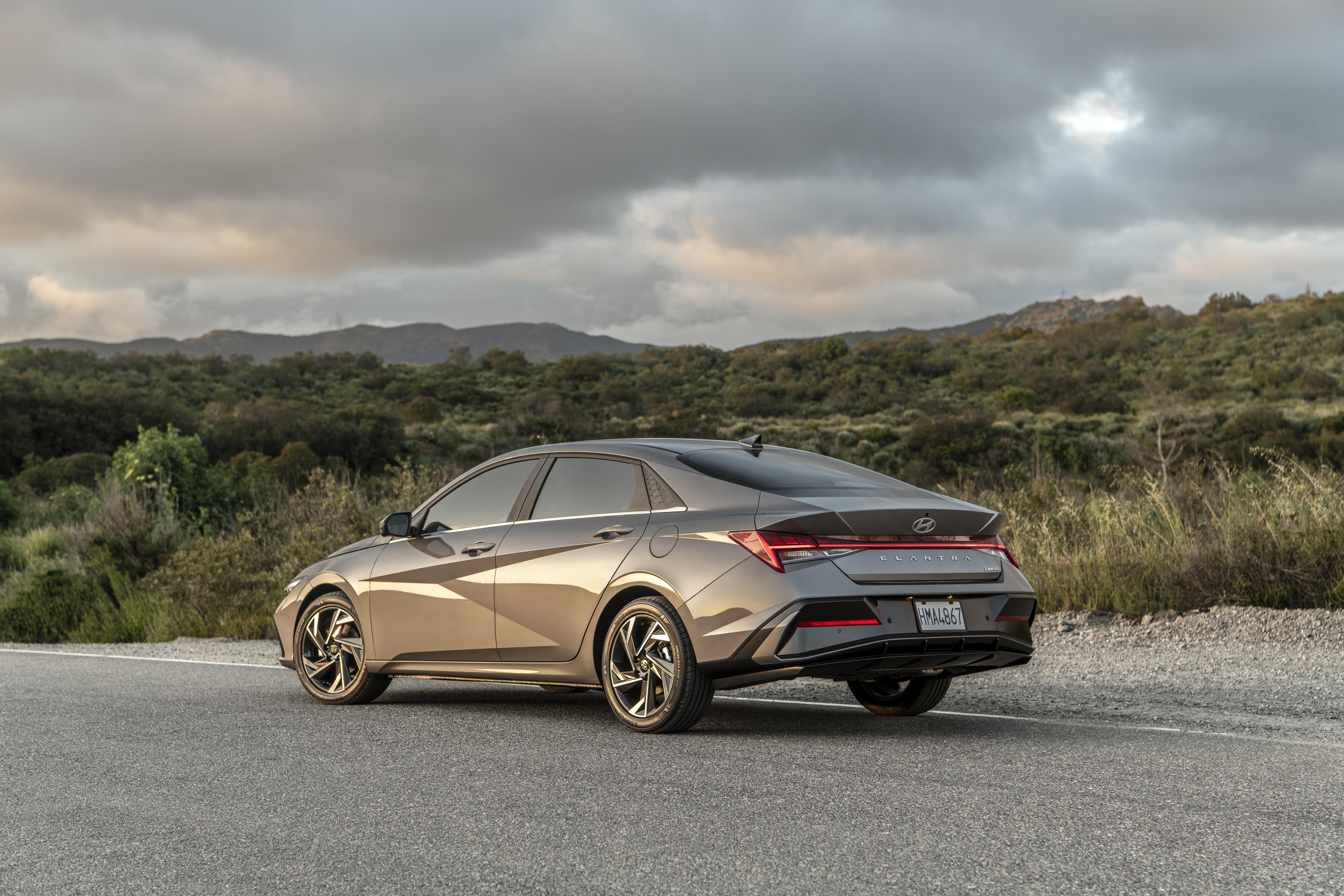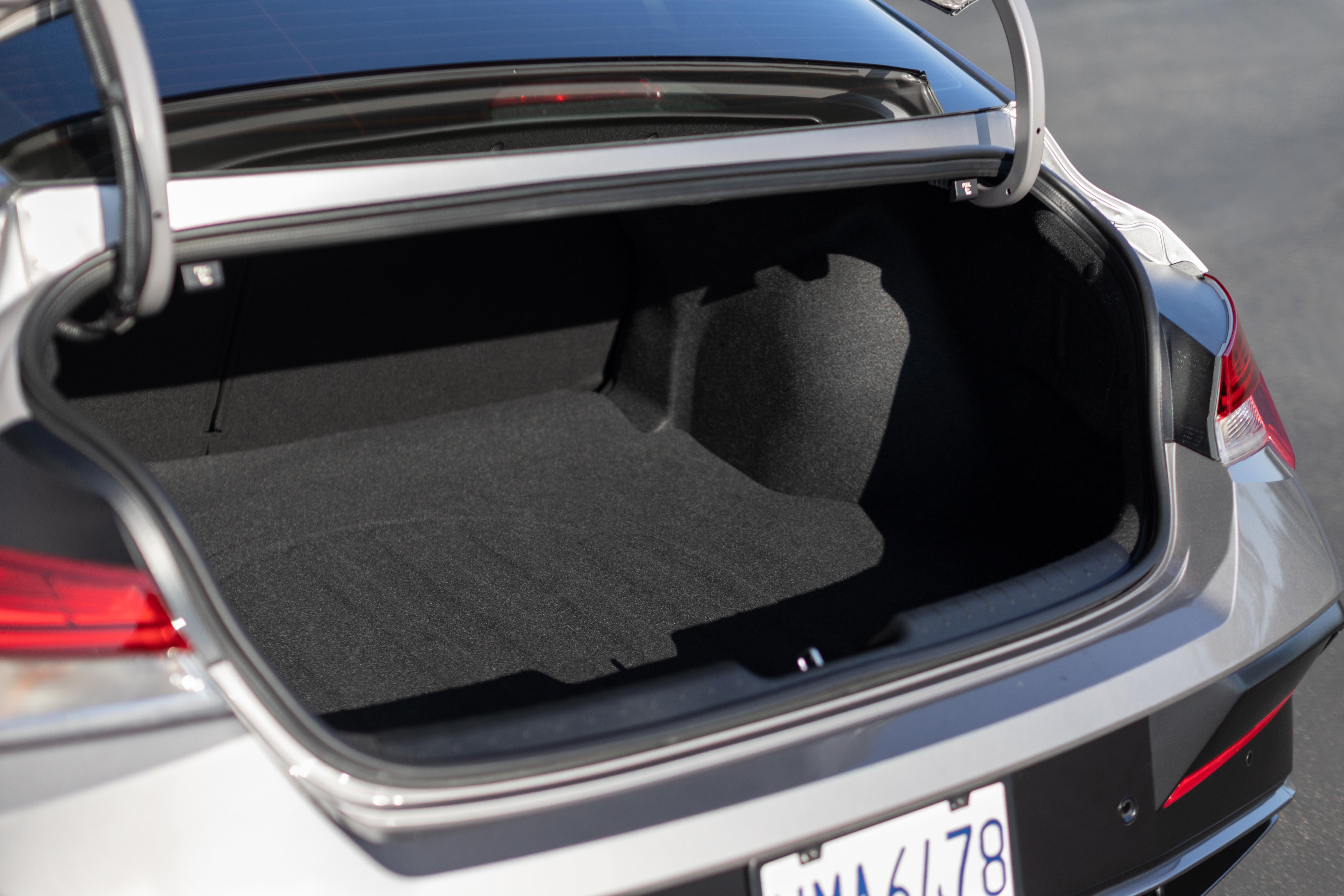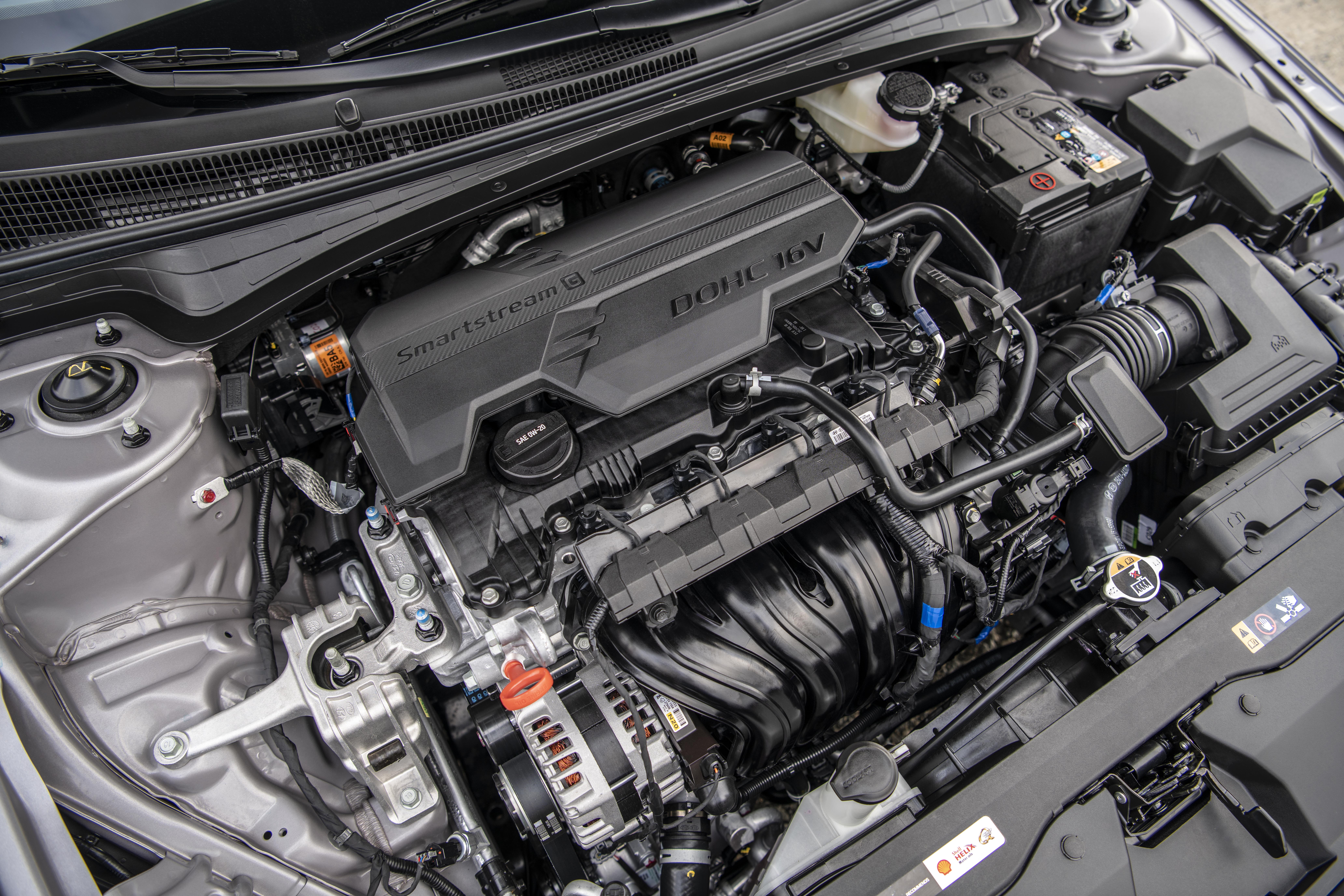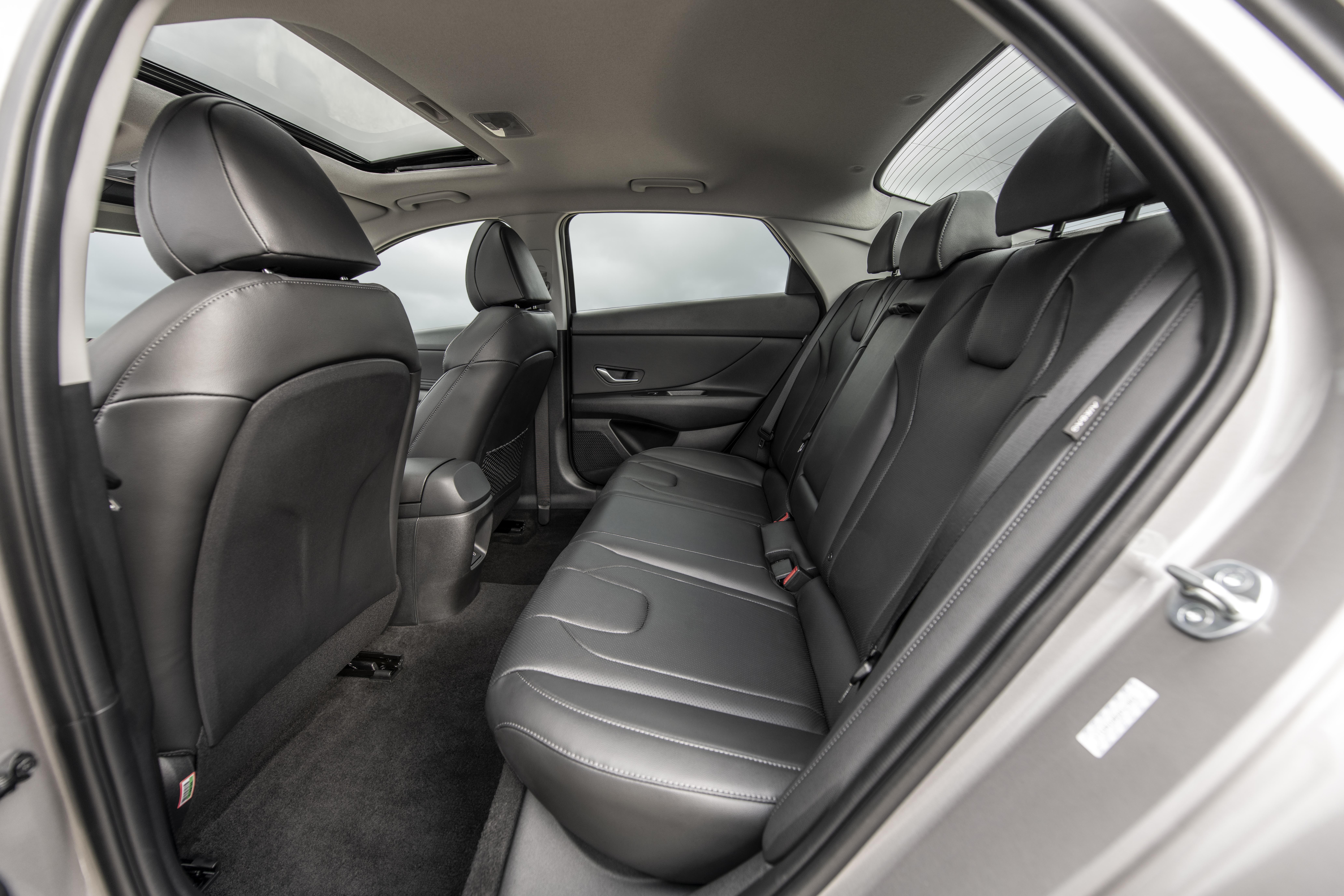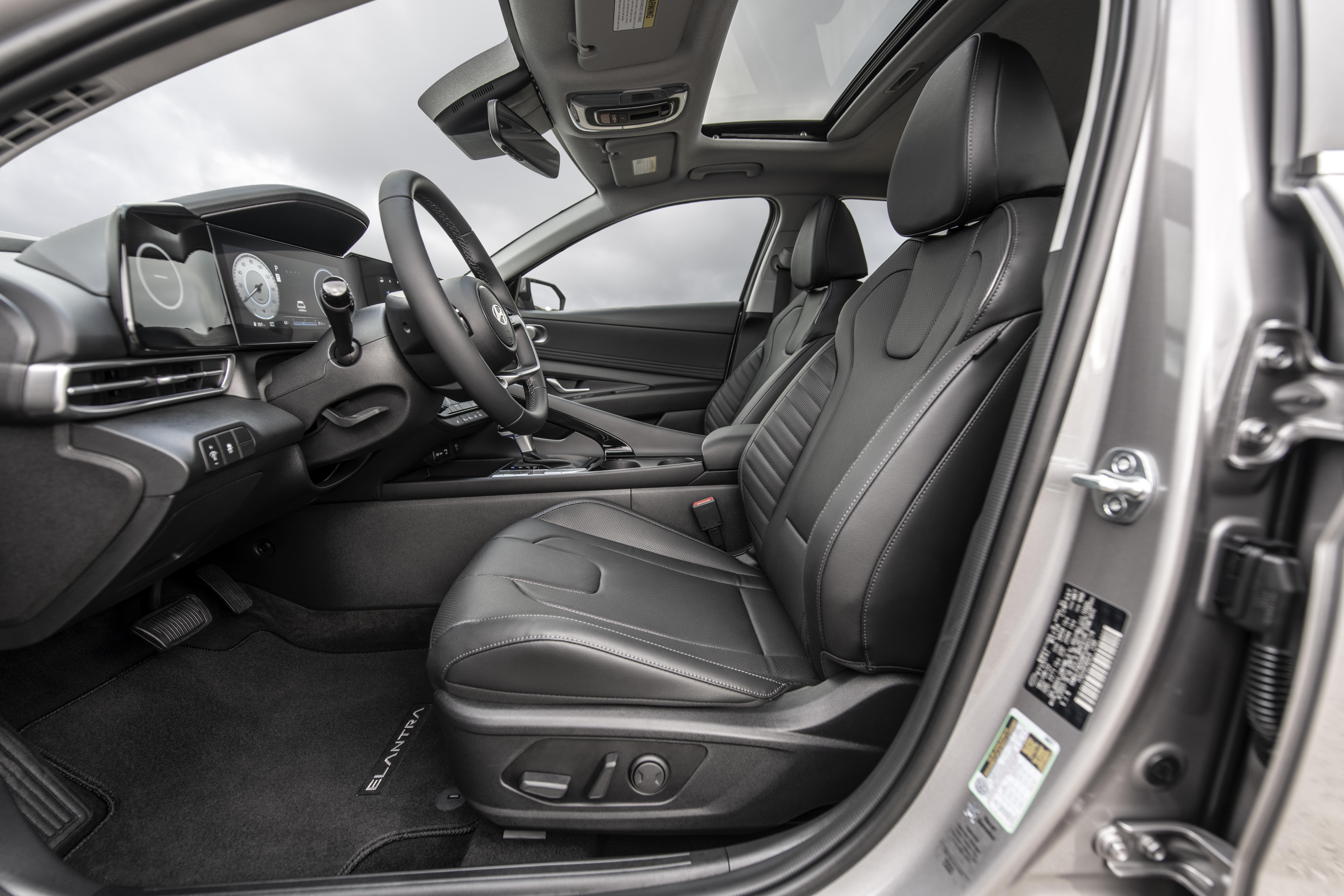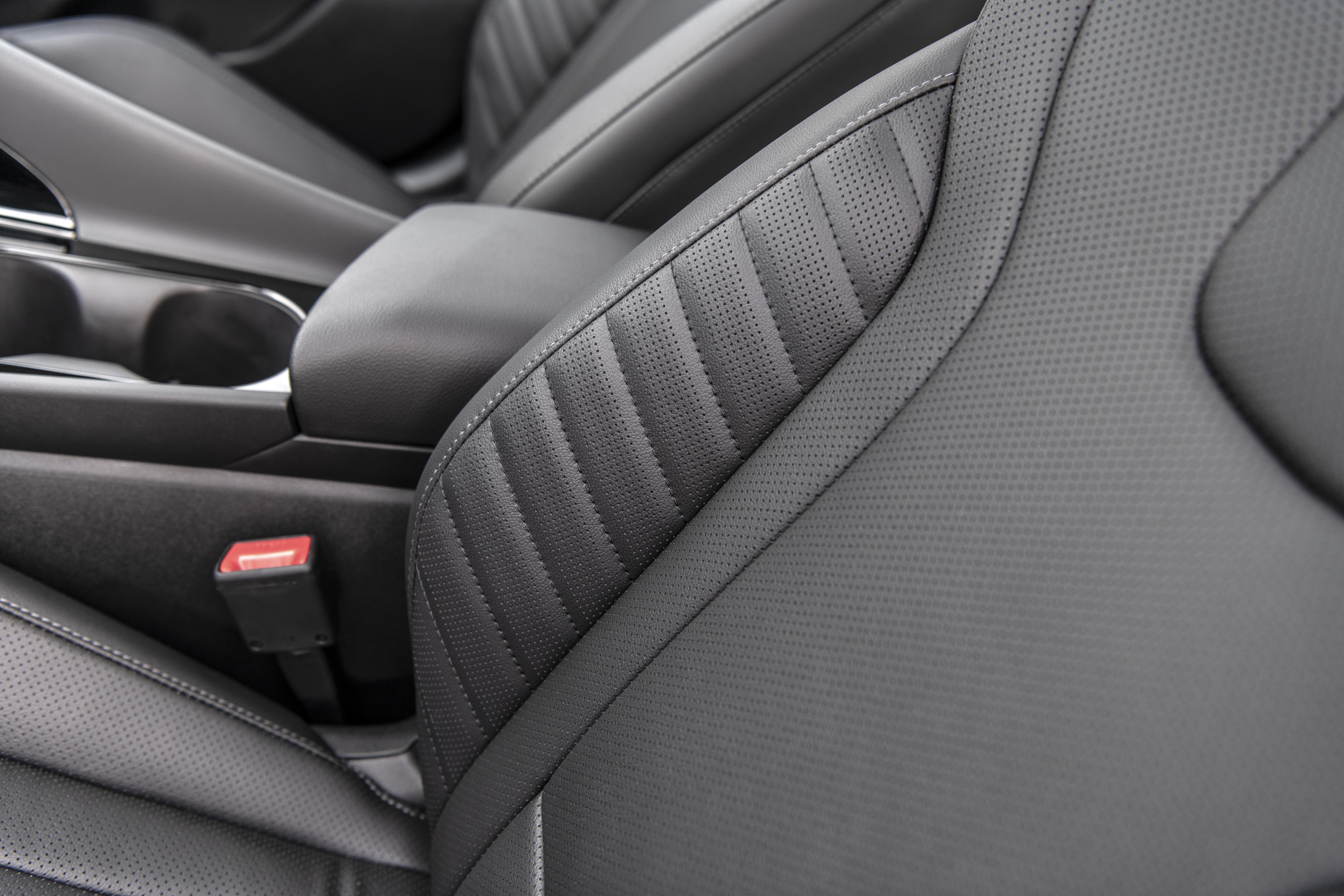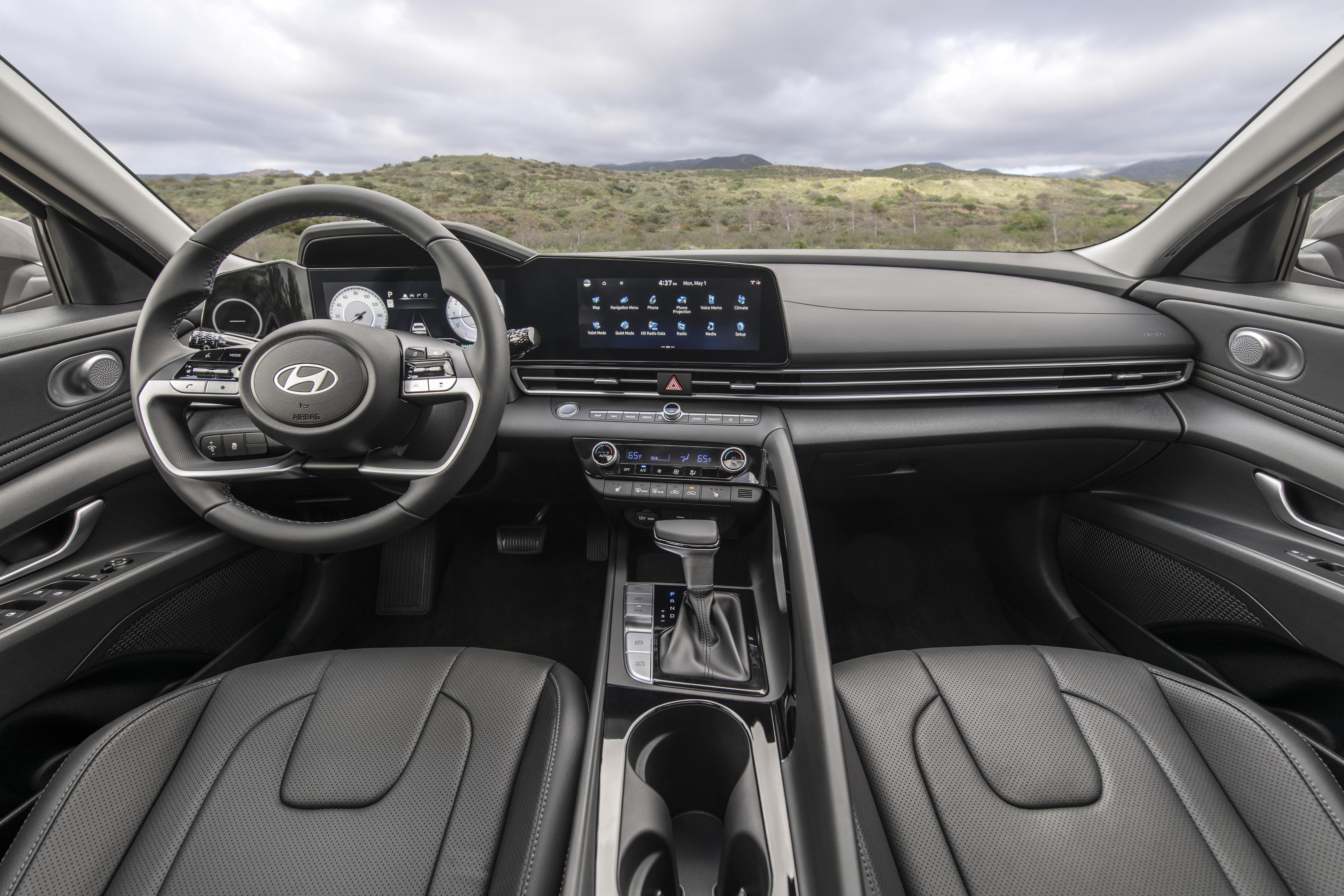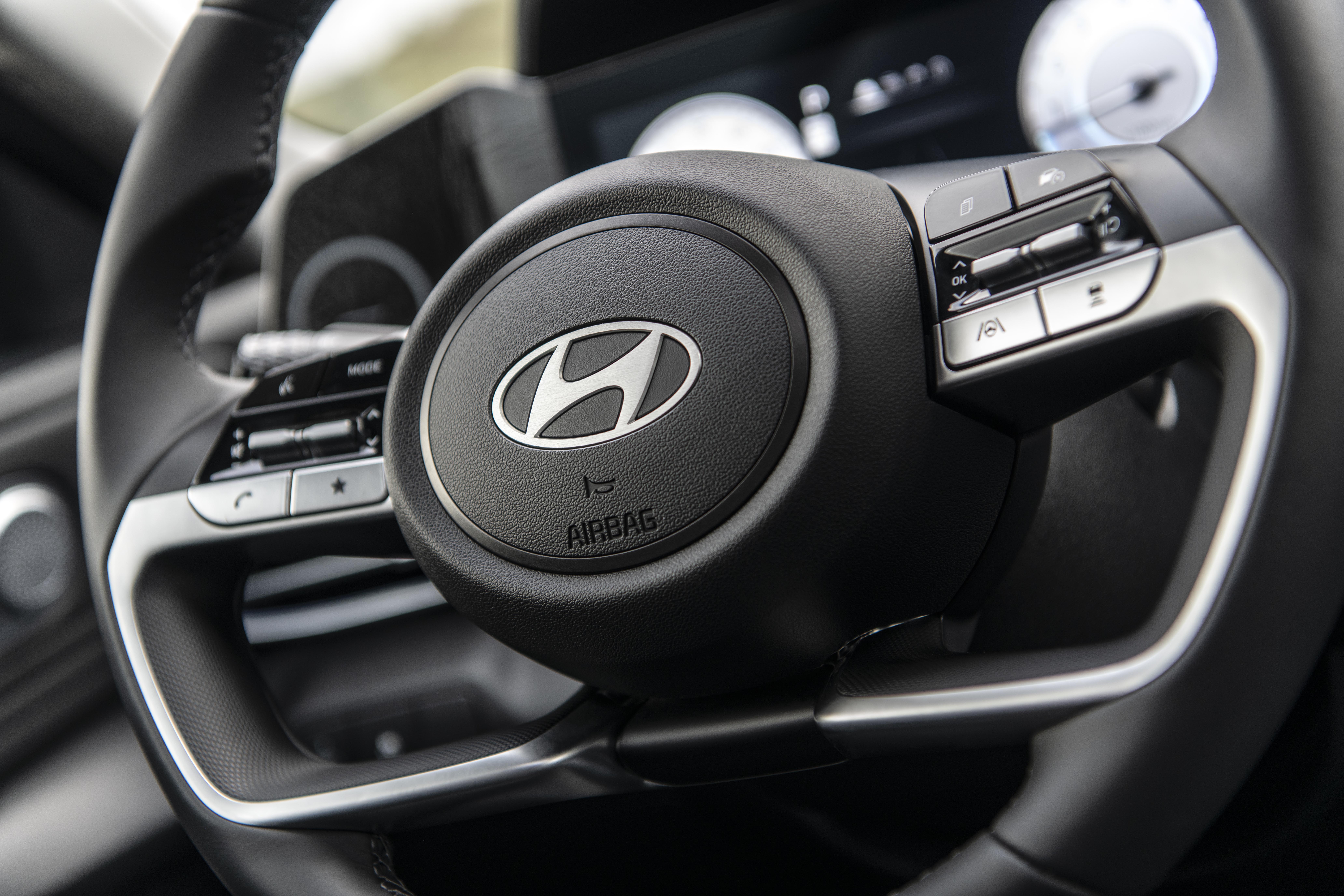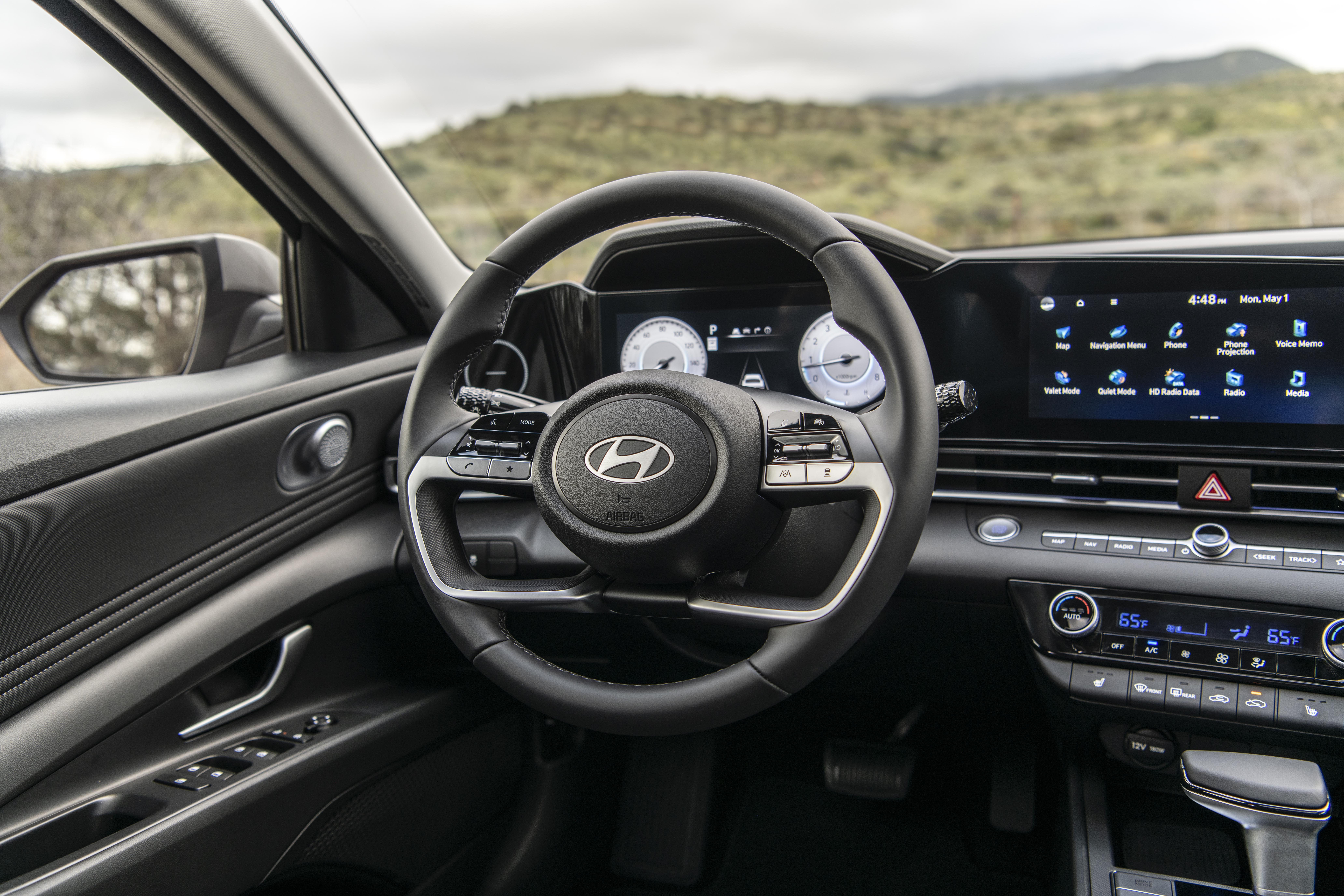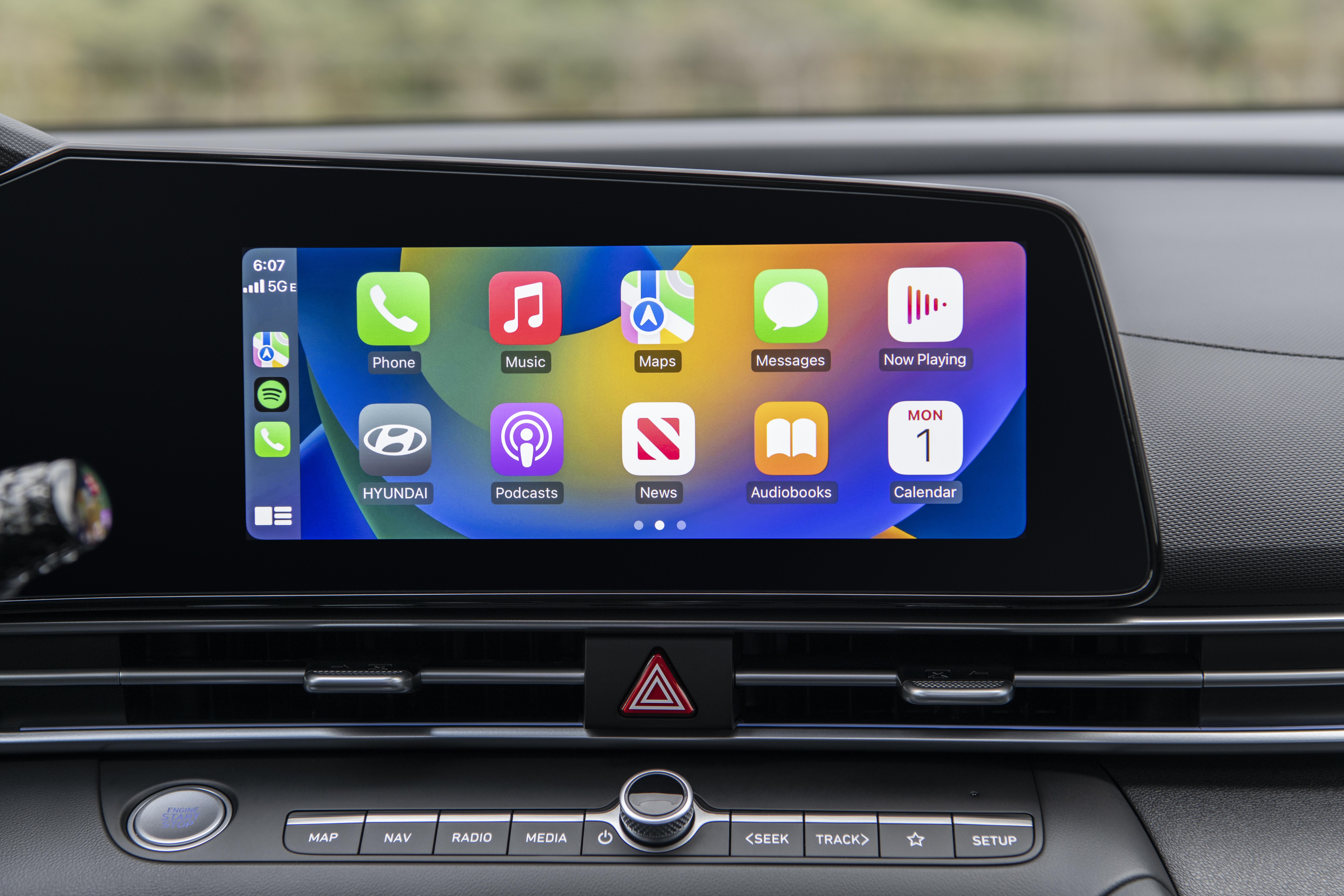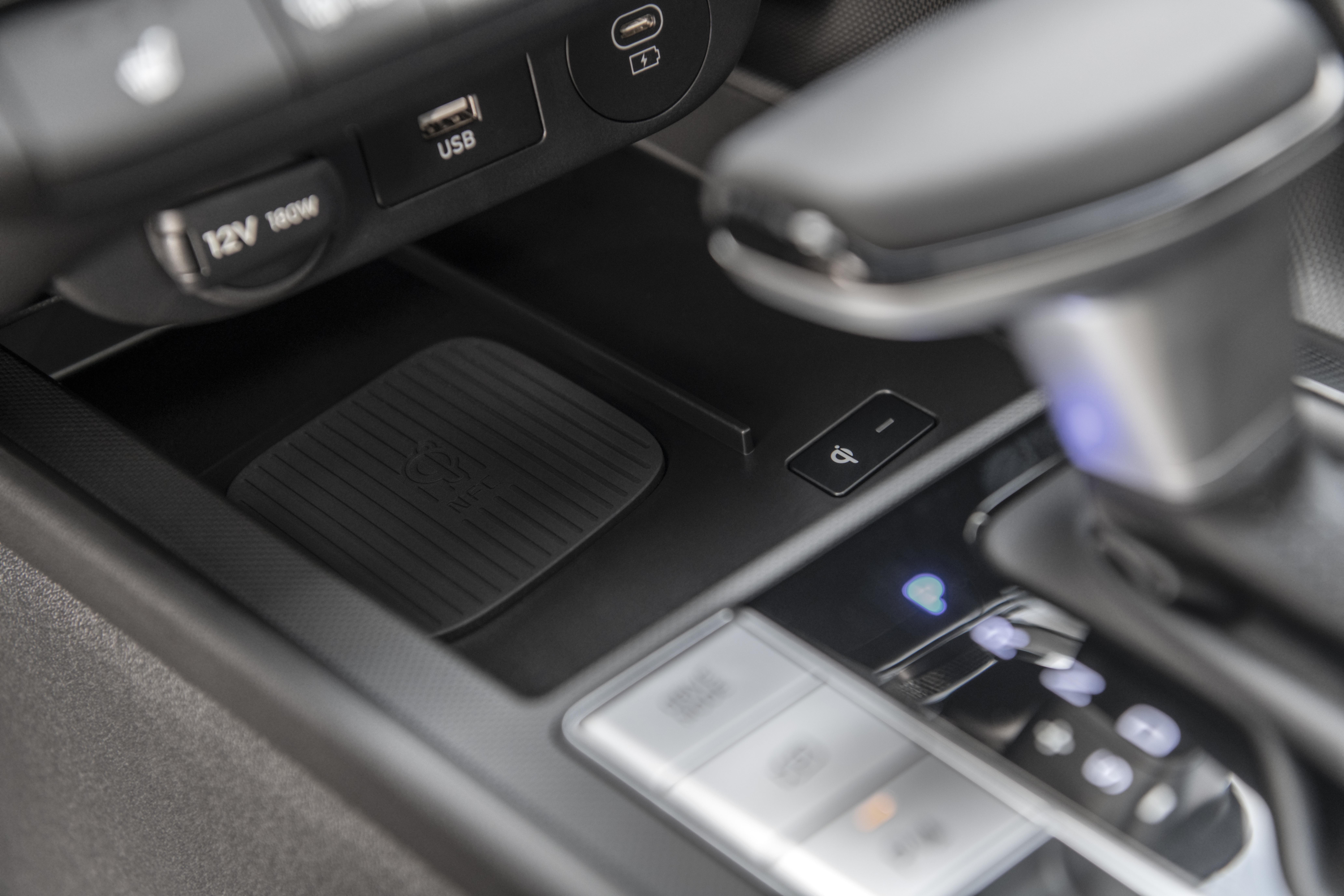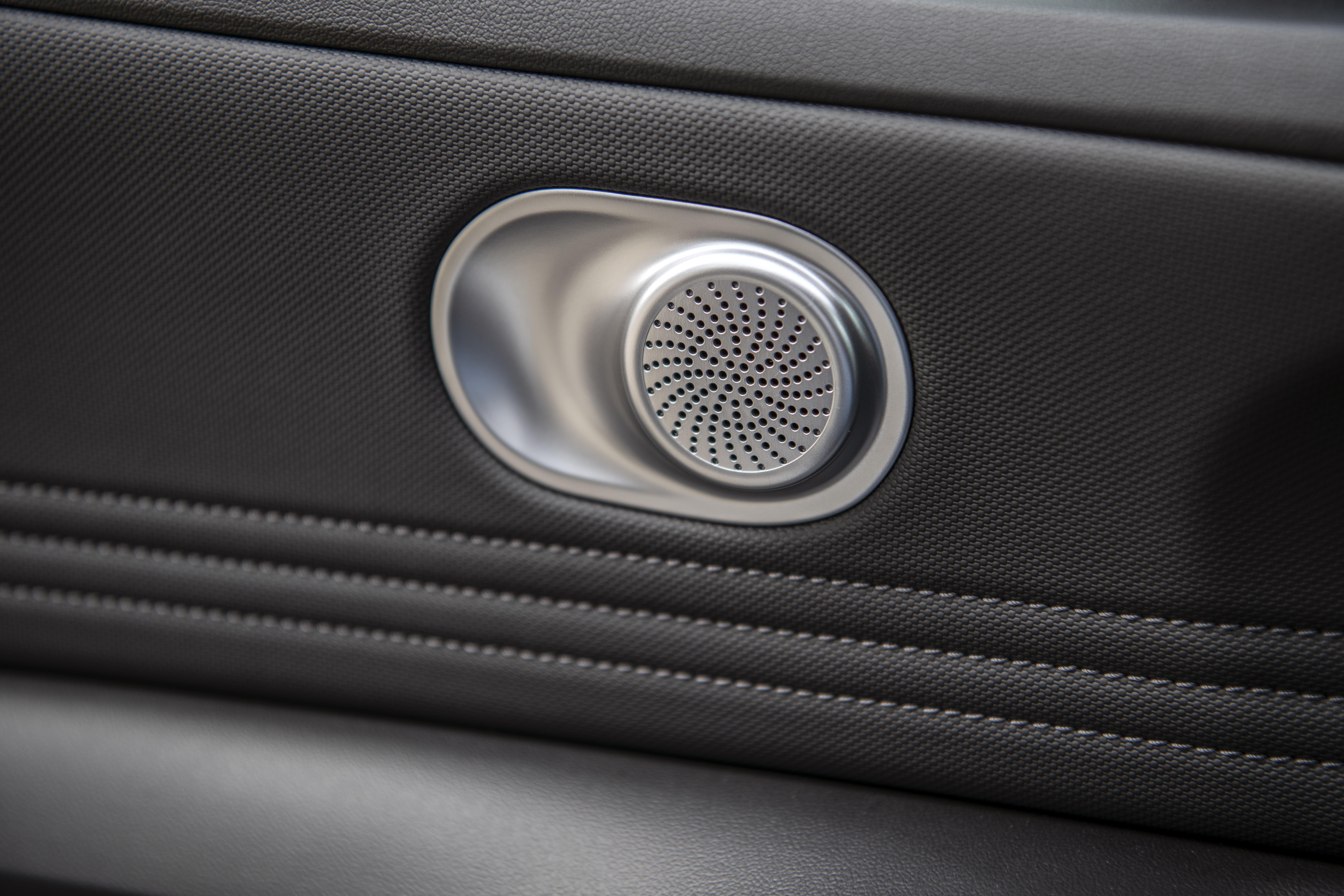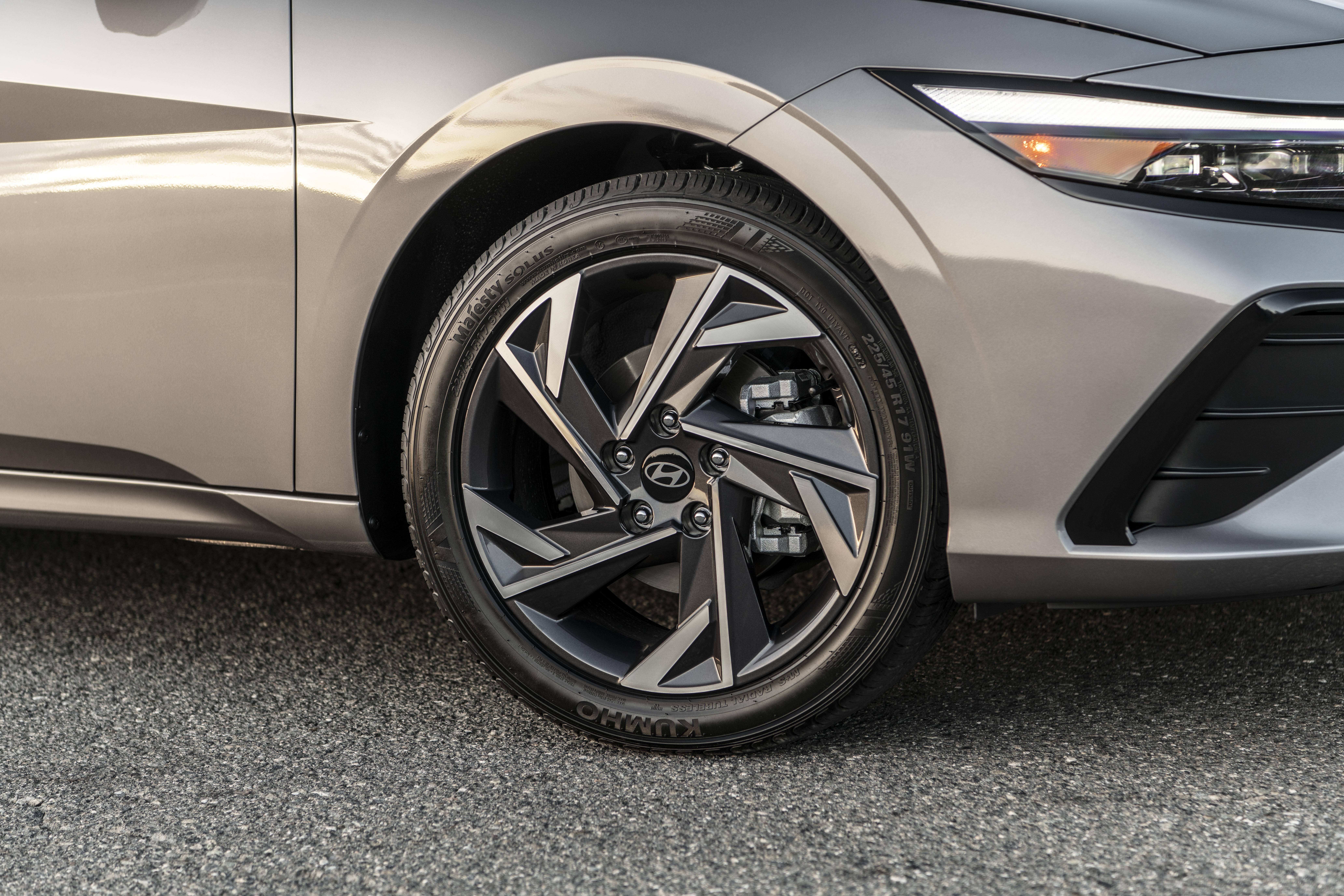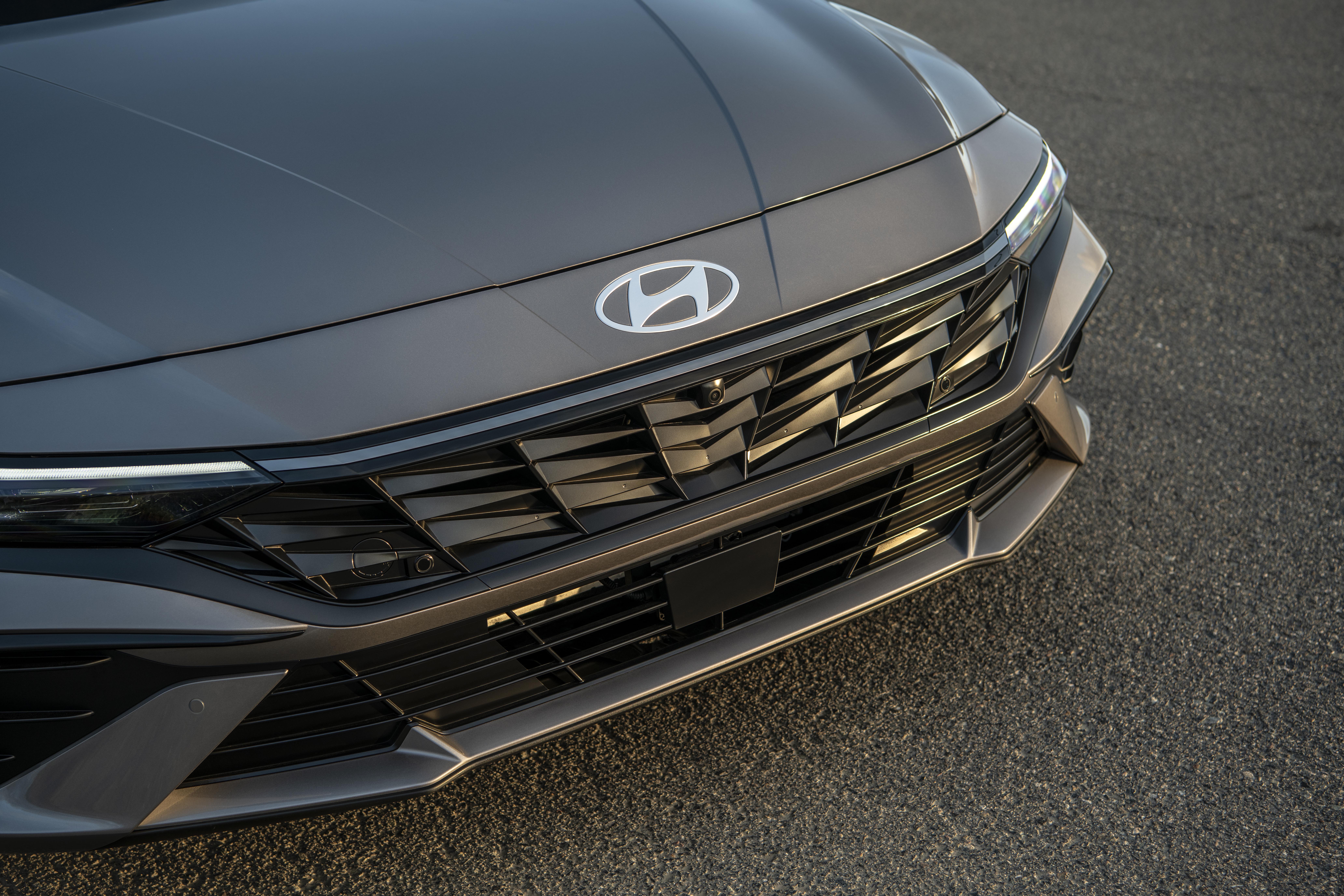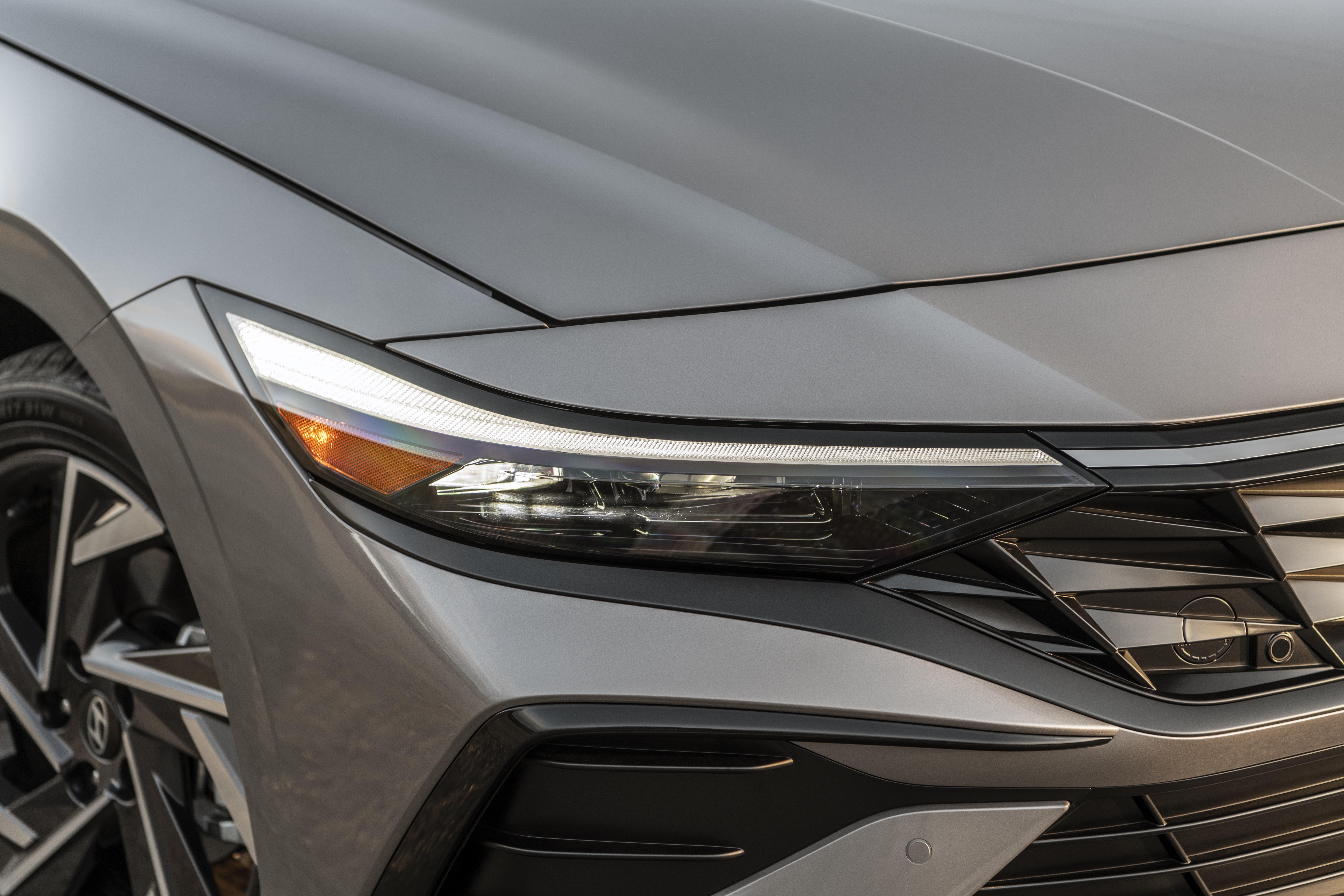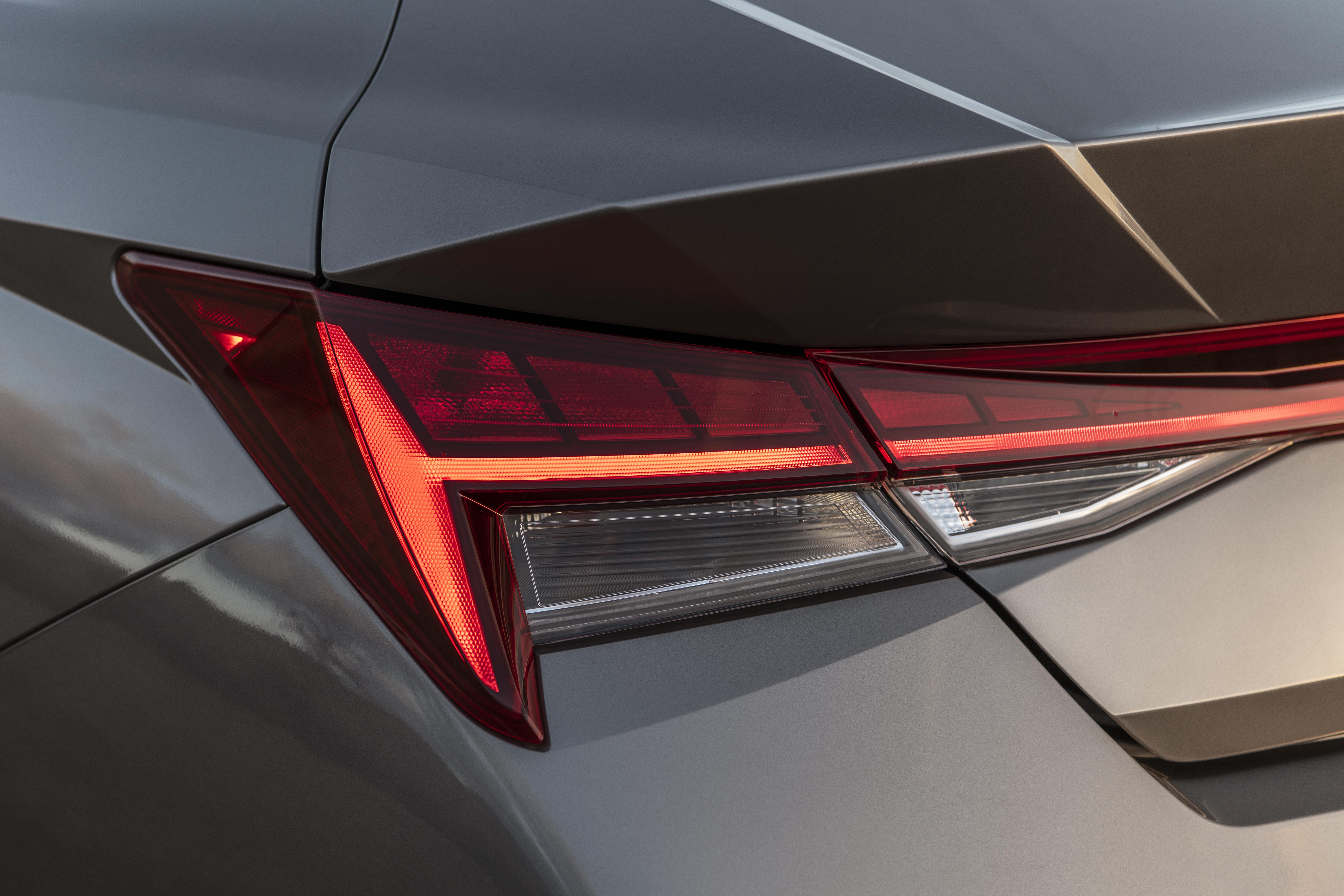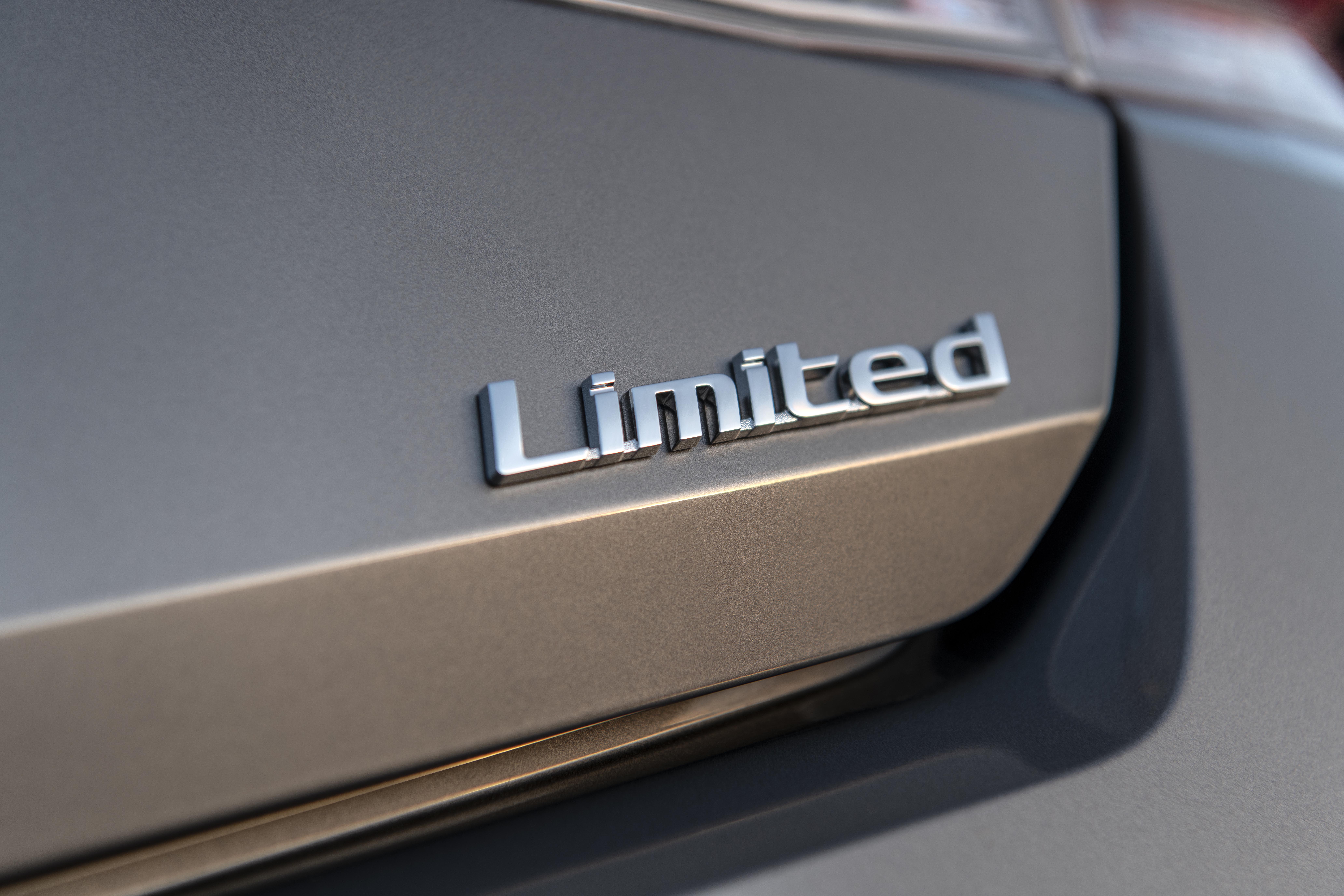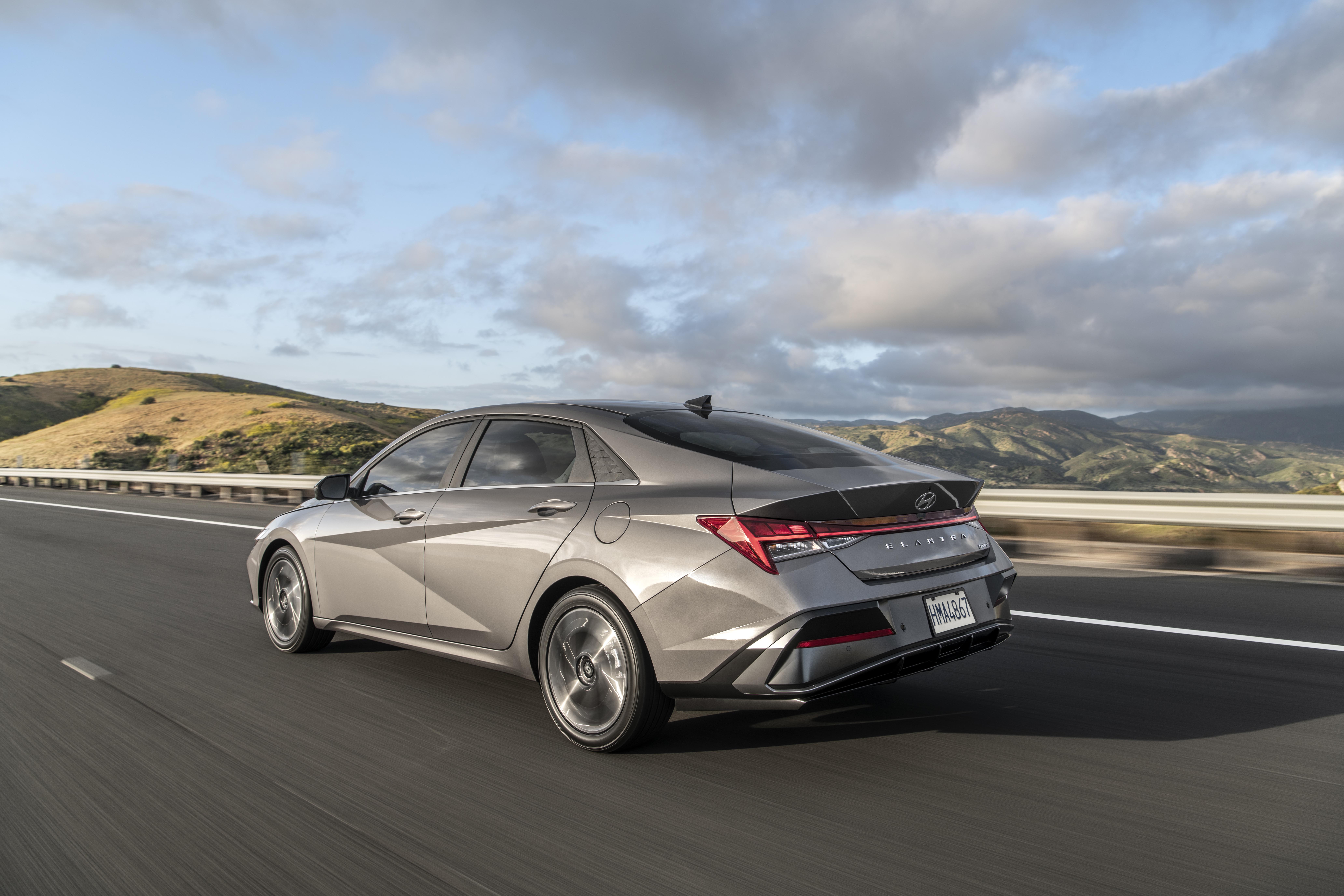
HYUNDAI Elantra 2024
Pros and cons
Pros
- Excellent equipment/price ratio
- Well-balanced steering
- Stable handling
- Low fuel consumption
- Simple controls and multimedia system
- Roomy trunk
Cons
- Noisy engine during acceleration
- Transmission sometimes jerky at low speeds
- Suspension still stiff at times
- Lack of support on front seats
- Low headroom at rear
- Dubious quality of certain materials
Overview
While several competitors have abandoned their compact sedans in North America, Hyundai is keeping its Elantra much alive. On sale for three years, the seventh generation is the subject of several changes this year, both to the body, in the cabin and in terms of safety. It offers no less than four engines, including a sporty one and a hybrid geared towards fuel economy. The most common pairs a four-cylinder with a continuously variable transmission, as in almost all of the Elantra's rivals.
The latter has long been one of the best-selling models in its category. The attractive pricing partly motivates this popularity: the Elantra has a starting price of $24,373 (including freight, delivery and dealer fees). Only its mechanical cousin, the Kia Forte, beats it by around $800. All other compact sedans exceed $26,000 with an automatic transmission.
The picture is similar at the top of the range, where the N-Line version with turbo engine tops out at $33,723. This time, only the Nissan Sentra SR is a few hundred dollars less, without providing the same power as the Elantra.
Even the cutting-edge Elantra N (in short) represents a relative bargain given its equipment, its 276 horsepower and its track-ready gear. Please note, this is the very last Hyundai offered with a manual transmission in Canada. Three-pedal driving enthusiasts who want a “regular” compact with a manual transmission can still turn to the Sentra S or SR, the Mazda 3 GT hatchback and, for the last time in 2024, the Volkswagen Jetta Trendline, Comfortline or GLI.
All Elantras sold here are assembled in South Korea.
Verdict
It goes without saying that a mid-range Elantra, such as the one we tested, does not arouse the senses like the dazzling N version. Over time, however, it has achieved an acceptable degree of refinement, especially given its affordable price. Its Japanese competitors still offer more flattering materials and superior reliability after several years, but these attributes come at a much higher price. If you don’t need the versatility of a hatchback or all-wheel drive, choose the Elantra over the Kona and save money across the board while enjoying greater performance.
Evaluation
Body, cabin and cargo space
Parée d’un style pour le moins audacieux, l’Elantra s’étire désormais sur plus de 4,7m. C’est presque autant que la Volkswagen Jetta, et quelque 10cm de plus que la Toyota Corolla. De plus, l’empattement de la Hyundai dépasse celui de ses deux rivales.
C’est sans doute ce qui explique le très grand dégagement pour les jambes aux places arrière. En contrepartie, la ligne de toit fuyante limite l’espace pour la tête des personnes de plus de 1,8m (5pi 11po). L’Elantra traîne aussi depuis longtemps un manque d’espace pour les pieds sous les sièges avant.
Ces derniers paraissent enveloppants au premier abord, mais la mollesse du rembourrage trahit un manque de soutien. Leur assise courte et leur appui lombaire insuffisant – il n’est réglable que dans la version N Line Ultimate – se font également sentir. La position de conduite est bien étudiée, mais plus basse que dans une Corolla, une Jetta ou une Sentra. De plus, la large console centrale empiète sur l’espace dévolu au genou droit.
Le coffre vaste et de forme régulière pourrait facilement convenir à une famille en vacances à l’hôtel. Mais que dire de la banquette arrière rabattable d’un seul bloc dans les versions Essential et Preferred, sinon qu’elle empêche d’accommoder à la fois des objets longs et un occupant arrière? Des dossiers fractionnés sont devenus la norme depuis belle lurette, même dans les modèles d’entrée de gamme.
On sent que Hyundai a voulu économiser là pour inclure plus d’accessoires dans l’habitacle, qui est particulièrement bien équipé pour le prix demandé. À environ 28 500$, la variante Preferred avec ensemble Tech que nous avons essayée proposait un très convivial système multimédia de 10,25 pouces avec navigation intégrée, un second écran de même taille en guide d’instrumentation, un climatiseur automatique à deux zones, un volant chauffant et un toit ouvrant. Le tout s’accompagnait de nombreuses commandes physiques très simples et faciles d’accès, ainsi que d’espaces de rangement vastes et bien conçus.
Au rayon des reproches, citons l’obligation de brancher l’appareil mobile avec un câble pour utiliser Android Auto ou Apple CarPlay, alors que les modèles munis de l’écran standard de 8 pouces offrent une connexion sans fil. En outre, le volant cache le haut des cadrans pour les personnes de grande taille, une tare commune dans les véhicules munis d’une instrumentation disposée à la même hauteur que l’écran central.
Enfin, sans être carrément bon marché, la texture et la sensation de durabilité des tissus et garnitures souffrent de la comparaison avec les matériaux d’une Honda Civic, d’une Toyota Corolla ou, encore mieux, d’une Mazda 3.
Safety
Safety features
- Antilock brakes with electronic brake-force distribution and brake assist
- Stability and traction control
- Hill-start assist
- Front airbags
- Front and rear side airbags
- Side curtain airbags
- Front seat belts with pretensioners
- Five adjustable headrests (fixed at the rear in Essential and Preferred models)
- Backup camera
- Tire pressure monitor
- Forward collision warning
- Front automatic emergency braking with detection of pedestrians and cyclists (detection of vehicles approaching from the opposite direction at an intersection included in Luxury and N Line)
- Lane departure alert with automatic steering assist
- Active lane control
- Auto high beam
- Blind-spot monitoring system with automatic steering assist, rear cross-traffic alert with automatic braking and rear safe exit alert (standard on Preferred, Luxury, N Line and N, not available on Essential)
- Adaptive cruise control (standard on Luxury and N Line Ultimate, not available on Essential, Preferred, and N)
- Front and rear parking sensors (standard on N, not available on other versions)
Crash test results
National Highway Traffic Safety Administration
Overall score: Not tested
Frontal impact: 4 / 5
Side impact: Not tested
Rollover resistance: 5 / 5
Insurance Institute For Highway Safety
Moderate overlap frontal impact: 2 / 4
Small overlap frontal impact: 4 / 4
Side impact: 4 / 4
Rear impact: Not tested
Roof strength: Not tested
IIHS Top Safety Pick
Visibility
Visibility is good to the front and sides, although the wide B-pillars hamper lane changes. Unfortunately, the Essential base version comes without electronic blind-spot monitoring. The steep upward slope of the rear deck makes the rearview camera an absolute must; be sure to clean it often in winter.
Headlights: the LED headlights on N Line and N versions received top marks from the Insurance Institute for Highway Safety, despite a few shortcomings. The LED reflector headlights fitted on other versions, not offered in the United States, were not evaluated.
Mechanical overview
The Elantra migrated to a new platform when it was renewed some three years ago. Both stiffer and lighter than its predecessor, this structure features a lower driving position and adjusted proportions for a sleeker stance and, in theory, a more dynamic feel than before.
This platform has also paved the way for a hybrid powertrain in Hyundai’s compact car. Similar to the Kia Niro Hybrid, this system combines a 1.6-litre four-cylinder with an electric motor and a 1.32kWh lithium-ion battery. The 139hp are channelled through a six-speed dual-clutch automatic gearbox. Available only on the Luxury model, this $2500 option also provides independent rear suspension.
Another engine of the same displacement, now turbocharged rather than electrified, propels the Elantra N Line. It delivers a maximum torque of 195lb-ft, which is identical to that of the hybrid version, but its 201hp result in a much more powerful engine. Still dual-clutch, the transmission now features seven gears.
For those who crave even more, the N version pushes power to 276hp and torque to no less than 289lb-ft, courtesy of a turbocharged 2.0-litre four-cylinder. This surge of vigour comes with a series of tweaks to the steering, suspension, exhaust, tires, and electronic drive management.
Buyers can choose between an eight-speed dual-clutch transmission and a good old-fashioned six-speed manual, the only one in Hyundai’s entire Canadian catalogue. This transmission features an automatic rev-matching function when downshifting, a function that heel-and-toe enthusiasts can deactivate to do the work themselves.
Nothing of the sort in the majority of Elantras, which are instead delivered with a 2.0-litre Atkinson-cycle combustion engine—to promote fuel economy—and a continuously variable transmission. Unchanged since 2017, this combination delivers 147hp and 132lb-ft of torque, both slightly below the class average. As with all Elantras, power is directed exclusively to the front wheels.
When it comes to fuel consumption, Hyundai’s solution certainly hits the mark. Natural Resources Canada’s combined city-highway rating ranks among the lowest in the segment at 6.8L/100km. We measured 7.3L/100km on a mix of highway and city driving, while an all-highway trip yielded 6.4L/100km.
Driving impressions
Hyundai claims that the new platform and lowered driving position have made the Elantra more dynamic and connected than ever.
This is quite evident in the N version, of which we tested a performance blue model with a manual gearbox last year. Thanks to its very direct steering, adaptive suspension, structural reinforcements and limited-slip differential, the car bites into asphalt and shoots out of corners with a tenacity uncommon to Hyundai.
It features neither the fine balance of a Honda Civic Type R nor the traction of a Subaru WRX and its all-wheel drive. The driveability and suppleness of Volkswagen’s small sports cars on bumpy roads are also out of its reach. On top of this, the significant turbo lag means that gear changes have to be carefully planned to maintain the ideal power range on winding roads.
Nevertheless, this energized Elantra proves very pleasant to drive, especially with the manual transmission—not as precise as in a Civic Type R, but still a genuine pleasure to operate.
What remains of these feats in the “people’s” Elantra? Without a doubt, well-balanced steering, less assisted than that of a Toyota Corolla, for example. Then there’s the very decent stability at cruising speed, making the experience all the more serene in that Hyundai has finally increased soundproofing under the car.
In turns, the very ordinary original-equipment tires show their limits well before those of the chassis. Incidentally, we were pleased to note that the rear axle no longer has a tendency to buckle on an expansion joint midway through a bend, a characteristic that has long afflicted small Hyundai cars fitted with a torsion beam. However, the automaker still needs to work on making the suspension more supple, as some bumps reverberate too forcefully in the cabin.
They could also refine the transmission a little more at lower speeds. Take-off is generally linear, but a sudden surge of power—for instance, to get out of an intersection quickly—is enough to make it feel hesitant or jerky.
Yet, once the car is underway, the gearbox harnesses the power very well and reacts promptly to the driver’s decisions, bringing an unexpected liveliness to the driving experience. The gear changes it simulates avoid long bursts of engine speed, which is a good thing, because these can be noisy.
However, the same could be said of most of the Elantra’s rivals, with the exception of the Mazda 3 and Volkswagen Jetta, which are still fitted with traditional automatic gearboxes.
Other highlights
Braking: the well-balanced pedal provides enough bite in the early stages. Moderately powerful emergency braking, but stable and straight, without excessive intervention of the antilock system.
Driving assistance: adaptive cruise control only on Luxury and N Line Ultimate versions; in other Hyundai models we tested, it was generally slow to reaccelerate. Lane departure alert too sensitive.
